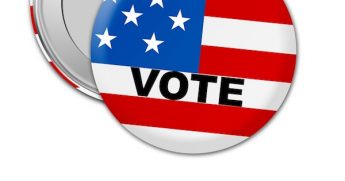
An election audit in a New Hampshire town may have discovered why initial results were so far at variance from those revealed in a follow-up hand count.
The audit was triggered because of what happened to Democratic state House candidate Kristi St. Laurent. As of election night, she was short by 24 votes of winning one of the four seats of for grabs in Windham, a town of 10,000.
But when the recount was held, she was 420 votes short.
St. Laurent’s initial total had been overcounted by about 99 votes according to the recount, while the Republicans who finished ahead of her were undercounted in the initial tally.
The audit was held to determine why the initial results were so far off.
The auditors currently suspect that fold lines in the ballots being scanned fooled the machine into thinking that a candidate whose name appeared on a fold line received a vote.
“Something we strongly suspect at this juncture, based on various evidence, is that in some cases, fold lines are being interpreted by the scanners as valid votes,” said independent auditor Mark Lindeman, according to WMUR-TV.
The auditors tried to explain what happened in a series of tweets, noting one instance that showed a discrepancy between what was cast and what was counted, in which only 28 percent of the Republican votes cast were recorded accurately.
The fold effect is large enough to account for discrepancies, but might not be all that’s going on. 75 folded ballots voted straight Republican. Only 48 votes recorded for them. Folds generated overvotes. This is machine used on Election Day 4 most absentee ballots #NHPolitics pic.twitter.com/ykTm5t8pDG
— WindhamNHAuditors (@WAuditors) May 22, 2021
The “school” machine has even more dramatic problem: counted only 28% of the 75 votes for each R candidate in this contest. #NHPolitics pic.twitter.com/rpvVljb7ww
— WindhamNHAuditors (@WAuditors) May 22, 2021
We now have experimental confirmation that if the contest is undervoted, a fold through a vote target can create a vote. None of the 65 ballots was marked for St. Laurent, but the machines interpreted 25 of the folds as votes for her. #NHPolitics pic.twitter.com/JMeQT2uqNU
— WindhamNHAuditors (@WAuditors) May 22, 2021
And the most frequent name to appear on a fold was that of St. Laurent.
“Wherever the fold happened to be was, I guess, most commonly through my name,” she told WMUR.
Auditors said their explanation fits the outcome.
“Because if someone voted for all four Republican candidates and the ballot happened to have its fold line going through St. Laurent’s target, then that might be interpreted by the machines as an overvote, which would then subtract votes from each of those four Republican candidates,” said auditor Philip Stark, according to WMUR.
“Conversely, if there were not four votes already in that contest by the voter, a fold line through that target could have caused the machine to interpret it as a vote for St. Laurent,” he said.
The audit is not complete, but if the initial conclusion is correct, it could have a ripple effect across the state.
“Throughout New Hampshire, you’re using the same voting machines, the AccuVote, and in principle, it could be an issue,” Stark told WMUR, which is based in Manchester, the state’s largest city.
“It really depends where the folds are in relationship to the vote targets,” he said.
In election jargon, a “vote target” is the equivalent of a candidate.


